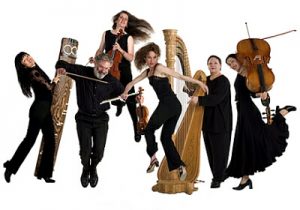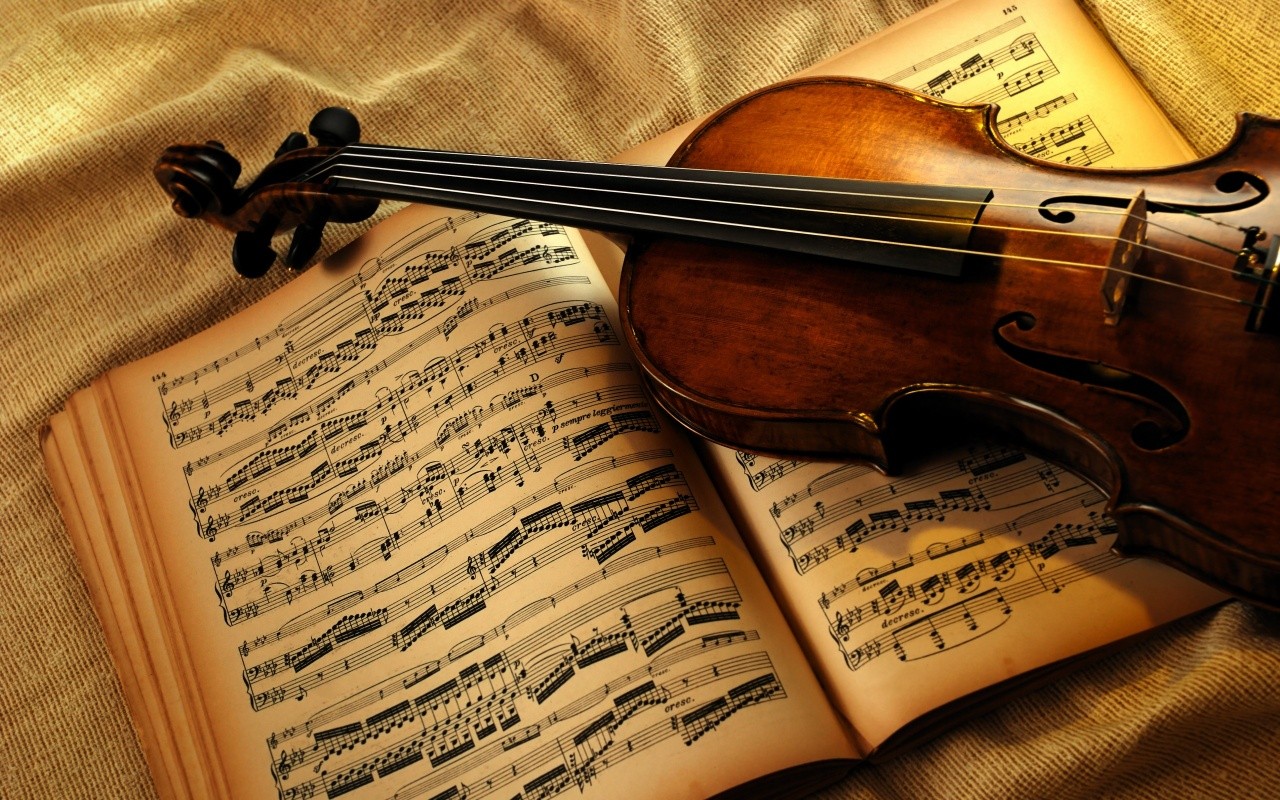Ensemble
 Ensemble – means the joint performance of a piece of music by several participants or a piece of music for a small number of performers; A favorite type of music since ancient times. In accordance with the number of performers (from two to ten), the ensemble is called a duet, trio (tertset), quartet, quintet, sextet, septet, octet, nonet or decimet – by the Latin name of the numbers. As independent works, ensembles belong to the field of chamber music, but also belong to operas, oratorios and cantatas. VIA (vocal – instrumental ensembles) were common in Russia in the seventies.
Ensemble – means the joint performance of a piece of music by several participants or a piece of music for a small number of performers; A favorite type of music since ancient times. In accordance with the number of performers (from two to ten), the ensemble is called a duet, trio (tertset), quartet, quintet, sextet, septet, octet, nonet or decimet – by the Latin name of the numbers. As independent works, ensembles belong to the field of chamber music, but also belong to operas, oratorios and cantatas. VIA (vocal – instrumental ensembles) were common in Russia in the seventies.
The story tells us one of the possible ways to form an ensemble: another instrumental “voice” joins the poetic tune of the shepherd’s horn, he timidly searches for his way and finds it, wrapping the melody of the first performer with expressive ornament of sound lace that does not interfere with listening to this tune , as if emphasizing inventive finds.
Several singers fervently deduce the Russian folk dance song. They sing it together. One simply would not have such a variety of emotional shades, a variety of vocal patterns created by various combinations of voices. This is also an ensemble. They can not call the competition of singers, where each of the contenders for the victory seeks to show first of all their own skill. In the ensemble, on the contrary, everyone tries to proportion their artistic individuality, their own performing style, and technical methods with their individuality, style, and methods of performing partners, which ensures the coherence and harmony of the performance of a particular piece of music as a whole. The same can be said about the art of dance ensembles.
The compositions of instrumental ensembles are few. Each part in them is performed by one musician (chamber ensembles: duet, trio, quartet, quintet, etc.). The most common in terms of composition: piano duet, string quartet, quintet of wind instruments, piano and violin duet, trios (violin, cello, piano) and others – can often be heard on the domestic and foreign concert stage.
In the XVI-XVIII centuries. There were various forms of polyphonic ensemble. In the era of the Viennese classics, characteristic ensemble genres were formed, which have retained their significance to the present (violin with piano, string quartet, etc.).
We live in the heyday of ensemble music making, which gave rise to a variety of ensembles: percussion instruments, early music (“Madrigal”), etc. “Moscow Virtuosos” are also very famous. The participants in the ensemble are usually few, so during the joint music playing one can hear the play of each of them, which places special demands on the performer’s skill: he must have special sensitivity, responsiveness, creative intuition, prompting a certain mood in a complex and fascinating ensemble game with partners.
The ability to measure their capabilities and the capabilities of another is called ensemble performance. The high samples of the ensemble were shown by the trio of L.N. Oborin, D.F. Oistrakh, S.N. Knushevitsky, or the duet of S.T. Richter and Oistrakh. The violinist V. T. Spivakov and the violist Yu. A. Bashmet, interpreting the duets by W. A. Mozart, are considered true virtuosos. The game captures them with its temperament, unexpected sound and at the same time an extraordinary degree of mutual understanding, without which a true ensemble is impossible.
Each VIA has its own leader (perhaps not one). This is a highly professional musician who composes and arranges for the ensemble, and an artistic director who cares about the general “class” of the ensemble, about its style, about creating and constantly updating the repertoire; it is also the manager who is able to combine a reasonable touring ensemble load with the rehearsal period necessary for the creative growth of musicians; Finally, it is often the director who knows how to build a single program from a multitude of separate pieces of music in compliance with the specific laws of variety show. It is on the leaders that the main responsibility for the creative fate of the ensemble lies, for the selection of techniques, means, which, given common genre features, give to a particular VIA “faces are not a common expression”.


